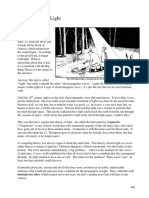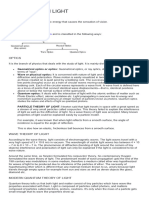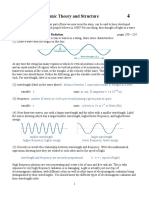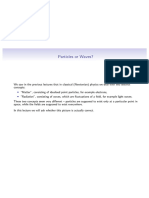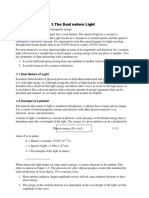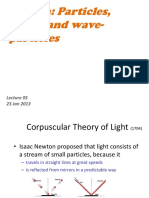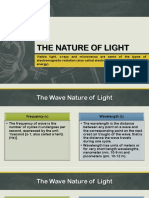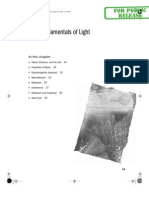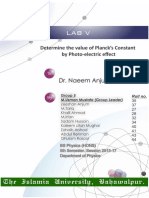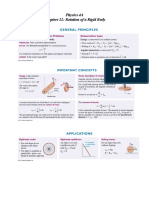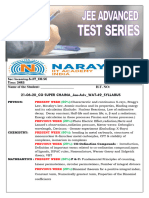0% found this document useful (0 votes)
64 views4 pagesWhatis Light IOSR
This document introduces a new definition of light as solitary waves that maintain their shape and speed while propagating through the universe at a constant velocity. It discusses some issues with current definitions, including how photons can have no mass but travel at light speed. The author proposes that elementary particles can "ride the wave of light" by finding vibrations that match their size, which would explain properties like color and interactions with matter. Maxwell's equations, Einstein's work on photoelectric effects, and Planck's equations are reviewed. The document concludes by suggesting all frequencies and subatomic objects move through an "ether" or "anoor" at different characteristic speeds.
Uploaded by
Matheus VasconcelosCopyright
© © All Rights Reserved
We take content rights seriously. If you suspect this is your content, claim it here.
Available Formats
Download as DOCX, PDF, TXT or read online on Scribd
0% found this document useful (0 votes)
64 views4 pagesWhatis Light IOSR
This document introduces a new definition of light as solitary waves that maintain their shape and speed while propagating through the universe at a constant velocity. It discusses some issues with current definitions, including how photons can have no mass but travel at light speed. The author proposes that elementary particles can "ride the wave of light" by finding vibrations that match their size, which would explain properties like color and interactions with matter. Maxwell's equations, Einstein's work on photoelectric effects, and Planck's equations are reviewed. The document concludes by suggesting all frequencies and subatomic objects move through an "ether" or "anoor" at different characteristic speeds.
Uploaded by
Matheus VasconcelosCopyright
© © All Rights Reserved
We take content rights seriously. If you suspect this is your content, claim it here.
Available Formats
Download as DOCX, PDF, TXT or read online on Scribd
/ 4



